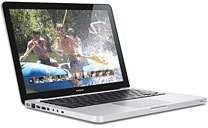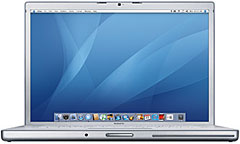In the classic children's nursery story, Goldilocks and the The
Three Bears, bratty Blondie does a home invasion of the Ursine
family's digs and determines that the baby bear-sized breakfast, chair,
and bed suit her best.
I'm old enough to remember when Detroit introduced "mid-size" cars
back in the 1960s. The Big Three had debuted their compact models in
1959, but there was a perceived niche for something in between them and
the humongous "standard" size models of the day. To fill the gap,
Chevrolet released the Chevelle, Ford its Fairlane, and Chrysler the
Dodge Coronet and Plymouth Belvedere.
Of course, these size categories are relative. In terms of external
dimensions, those original 1959 compacts are pretty big by today's
standards. The early 60s midsize models were as large as or larger than
full-size American sedans of the past decade or so, and in the 1970s
midsize cars got absolutely humongous. On the other hand, rationality
has returned in this century, and for quite a few years now the midsize
range has been the strongest selling and most competitive, with
currently the Chevy Malibu, Ford Fusion, and Dodge Avenger duking it
out with the Toyota Camry, Honda Accord, Mazda 6, et al.
And So It Is with Notebooks
 And so it
has been with laptop computers. A full size PowerBook used to be around
seven or eight pounds, but even the current "Papa Bear" 17" MacBook weighs
about the same as a midsize PowerBook 1400 of a dozen years ago -
and much less than the full size PowerBook 3400 or WallStreet of that same
era.
And so it
has been with laptop computers. A full size PowerBook used to be around
seven or eight pounds, but even the current "Papa Bear" 17" MacBook weighs
about the same as a midsize PowerBook 1400 of a dozen years ago -
and much less than the full size PowerBook 3400 or WallStreet of that same
era.
 Apple "subnotebooks", as they used
to be called, haven't changed much in size, and the MacBook Air is much lighter than
the original PowerBook Duos and
2400c of the early-to-mid
1990s. However, perhaps a better analogy with the Duo would be the new
Unibody MacBook, which
tips the scales at a tenth of a pound less than the 12" PowerBook, for which it is the most direct replacement.
Apple "subnotebooks", as they used
to be called, haven't changed much in size, and the MacBook Air is much lighter than
the original PowerBook Duos and
2400c of the early-to-mid
1990s. However, perhaps a better analogy with the Duo would be the new
Unibody MacBook, which
tips the scales at a tenth of a pound less than the 12" PowerBook, for which it is the most direct replacement.
Personally, midsize in cars or computers never really appealed to me
at the visceral level. I could appreciate their practical sensibleness
- Aristotle's "golden mean," I guess, of taking the "Mama Bear" (not
the biggest and not the smallest) route in either case, but I tend to
be more attracted to biggest or smallest. In cars, I've always
preferred them to be either small and minimalist or big and opulent.
Well, actually, big and minimalist would do fine as well. I had some
full-sized mid-60s Chevies with few options, six cylinder engines, and
stick shifts that I liked awfully well.
And in terms of the current fleet of Apple laptops, the ones that
enchant me the most are the Unibody MacBook (if only it had a FireWire
port) and the 17" MacBook Pro, although what's really missing in
Apple's notebook lineup is a netbook, which the MacBook Air really
isn't due to its restricted connectivity and expandability compared
with PC netbooks from Asus, et al. Of course, these designations, as
ever, are relative. The current midsize 15" MacBook Pro weighs just 5.5
pounds or four-tenths of a pound less than the erstwhile mid-sized 14"
iBook, and yet has a 1440 x 900 display that matches the screen
resolution of the original 17" PowerBooks.
Screen size is indeed one area where even the smallest of today's
Apple blocks is a "Big 'Book." Back in 1997, the 12.1" 800 x 600
display - introduced with the PowerBook 3400, a hulking "full-sized"
eight pound plus laptop if there ever was one - was a big deal, and at
the time the largest Apple portable screen ever. Today, the MacBook Air
and MacBook both have have 13.3" 1280 x 800 resolution displays, a
greater resolution than was available in any PowerBook until the mid-generation TiBooks of
2002, which had 1280 x 854 pixel displays.
Popularity and Value in the Middle
In any case, the midsize "Mama Bear" 'Books - the 15" PowerBooks and
MacBook Pros - have been popular sellers, and that's perfectly cool.
They are great machines. Midsized cars have always been strong sellers
too. Their middle-of-the-road character seems to appeal to many people
- even me these days. I have owned a Toyota Camry for several years,
and were I shopping for a new one today, I'm pretty smitten with the
latest Mazda 6 and the new Chevy Malibu.
 The
15" MacBook
Pro arguably offers fairly decent value for the money, at least by
Apple standards, although it remains to be seen if Apple can stubbornly
hold the $1,999 price point in this economy. I would say that the most
overpriced portable model Apple sells is without question the MacBook
Air, whose price simply can't be justified in terms of value.
The
15" MacBook
Pro arguably offers fairly decent value for the money, at least by
Apple standards, although it remains to be seen if Apple can stubbornly
hold the $1,999 price point in this economy. I would say that the most
overpriced portable model Apple sells is without question the MacBook
Air, whose price simply can't be justified in terms of value.
However, Apple
Certified Refurbished 15" MacBook Pros, especially the early 2008 models
(and we can anticipate soon the unibodies as well), strike me as an
exceptional value, selling as they frequently do in the $1,300 to
$1,500 range. That's the price of a new unibody MacBook, and with the
Apple Certified units coming with the same warranty and AppleCare
eligibility as a new machine, I would be inclined to go for the
refurbished 15-incher at that price level.
If money were no object (but when is it not?), I would still go for
a 17" MacBook Pro in a heartbeat. The 17-incher has enjoyed a pretty
good track record for reliability, and that big 1680 x 1050 display
would be a lovely to work with. I'm primarily a desktop substitute
laptop user, and the old Pismo that I use mostly for
"laptop" laptop duty weighs nearly as much as my 17" Big Al G4 PowerBook does
anyway, so I'm used to the weight
However, in terms of cost, performance, and value, the choice for me
is between the entry-level $1,299 Unibody MacBook and the refurbished
2.4 GHz MacBook Pro, and the MacBook Pro gets the nod, IMHO, because of
its bigger display and its FireWire ports and ExpressCard slot.
I still would love to see Apple build a real computer with decent
connectivity and expandability in the netbook size category, selling
for $800 to $900, to replace the current holdover plastic MacBook. I know
that a lot of 12" PowerBook fans are being drawn to the higher-end PC
netbooks on those criteria, and I have to say that even I am tempted to
get one and try running Ubuntu Linux on it.

 And so it
has been with laptop computers. A full size PowerBook used to be around
seven or eight pounds, but even the current "Papa Bear"
And so it
has been with laptop computers. A full size PowerBook used to be around
seven or eight pounds, but even the current "Papa Bear"  Apple "subnotebooks", as they used
to be called, haven't changed much in size, and the
Apple "subnotebooks", as they used
to be called, haven't changed much in size, and the  The
The

